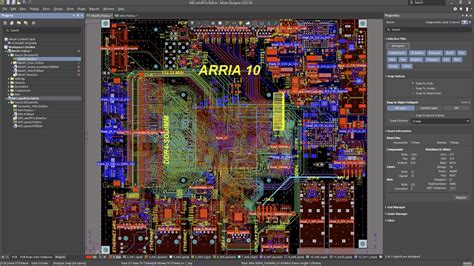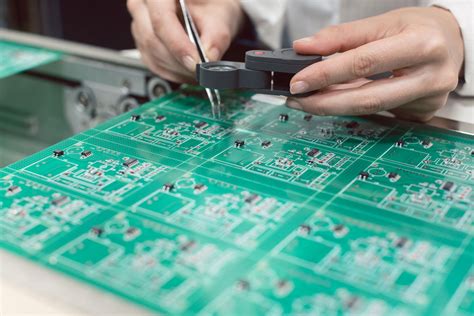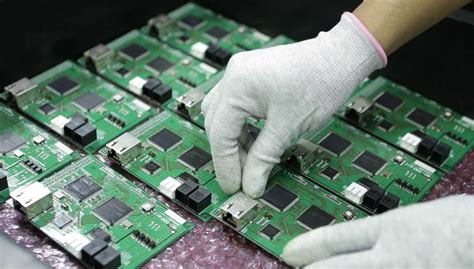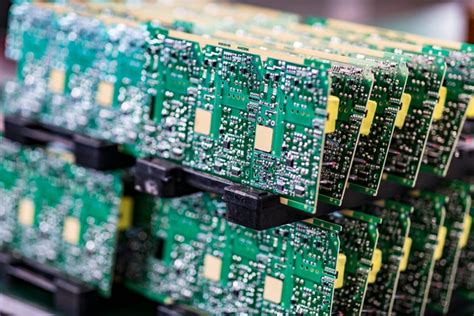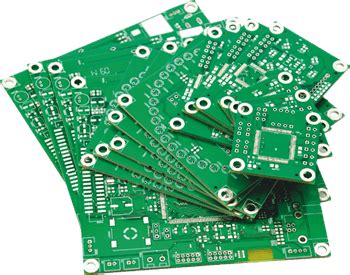Aluminum pcb manufacturing process
Advantages Of Using Aluminum PCBs In Electronics
Aluminum PCBs, or printed circuit boards, have become increasingly popular in the electronics industry due to their unique advantages over traditional PCB materials.
One of the primary benefits of using aluminum PCBs is their superior thermal conductivity.
Unlike conventional fiberglass-based PCBs, aluminum PCBs can efficiently dissipate heat, which is crucial for high-power applications. This enhanced thermal management helps in maintaining the performance and longevity of electronic components, thereby reducing the risk of overheating and subsequent failure.
In addition to thermal conductivity, aluminum PCBs offer excellent mechanical stability.
The aluminum substrate provides a robust foundation that can withstand mechanical stress and vibrations, making these PCBs ideal for applications in harsh environments.
This durability is particularly beneficial in automotive, aerospace, and industrial electronics, where reliability and resilience are paramount. Furthermore, the rigidity of aluminum PCBs ensures that they maintain their structural integrity over time, even under challenging conditions.
Another significant advantage of aluminum PCBs is their lightweight nature.
Despite their strength and durability, aluminum PCBs are relatively light, which is advantageous in applications where weight is a critical factor. For instance, in the automotive and aerospace industries, reducing the weight of electronic components can lead to improved fuel efficiency and overall performance.
The lightweight characteristic of aluminum PCBs also makes them easier to handle and install, simplifying the manufacturing and assembly processes.
Moreover, aluminum PCBs are environmentally friendly.
Aluminum is a recyclable material, and its use in PCBs contributes to sustainable manufacturing practices. The recycling process for aluminum is energy-efficient and produces fewer emissions compared to other materials, aligning with the growing emphasis on eco-friendly production methods in the electronics industry. By choosing aluminum PCBs, manufacturers can reduce their environmental footprint and promote sustainability.
The cost-effectiveness of aluminum PCBs is another compelling reason for their adoption.
While the initial cost of aluminum PCBs may be higher than that of traditional PCBs, their long-term benefits often outweigh the upfront investment. The improved thermal management and durability of aluminum PCBs can lead to lower maintenance costs and fewer replacements, resulting in significant savings over time.
Additionally, the efficient heat dissipation provided by aluminum PCBs can enhance the performance of electronic devices, potentially reducing the need for additional cooling mechanisms and further cutting costs.
Furthermore, aluminum PCBs offer excellent electrical insulation properties.
The dielectric layer in aluminum PCBs provides effective insulation between the conductive layers and the aluminum substrate, ensuring reliable electrical performance. This insulation is crucial for preventing short circuits and maintaining the integrity of the electronic signals, which is essential for the proper functioning of electronic devices.
In conclusion, the advantages of using aluminum PCBs in electronics are manifold. Their superior thermal conductivity, mechanical stability, lightweight nature, environmental friendliness, cost-effectiveness, and excellent electrical insulation properties make them an attractive choice for a wide range of applications. As the demand for high-performance and reliable electronic devices continues to grow, the adoption of aluminum PCBs is likely to increase, driving innovation and efficiency in the electronics industry.

Step-By-Step Guide To Aluminum PCB Fabrication
Aluminum PCB manufacturing is a specialized process that involves several critical steps to ensure the production of high-quality printed circuit boards. The process begins with the selection of the base material, which is typically an aluminum substrate. This substrate is chosen for its excellent thermal conductivity and mechanical stability, making it ideal for applications that require efficient heat dissipation.
Once the aluminum substrate is selected, the next step involves the application of a dielectric layer.
This layer serves as an insulating barrier between the conductive copper layer and the aluminum base. The dielectric material is usually a thermally conductive polymer that ensures efficient heat transfer while maintaining electrical insulation. The dielectric layer is applied using a lamination process, where the material is heated and pressed onto the aluminum substrate to form a uniform and stable layer.
Following the application of the dielectric layer, the copper foil is laminated onto the dielectric material.
This copper layer will form the conductive pathways of the PCB. The lamination process involves applying heat and pressure to bond the copper foil to the dielectric layer securely. Once the copper foil is in place, the next step is to create the circuit pattern on the copper layer. This is achieved through a process called photo lithography.
In photolithography, a photosensitive resist material is applied to the copper surface.
The resist is then exposed to ultraviolet light through a photo mask that contains the desired circuit pattern. The areas of the resist exposed to the light harden, while the unexposed areas remain soft and can be washed away using a developer solution. This process leaves behind a precise pattern of resist that protects the underlying copper during the subsequent etching process.
The etching process involves immersing the PCB in a chemical solution that removes the unprotected copper, leaving behind the desired circuit pattern. After etching, the remaining resist is stripped away, revealing the copper traces that form the electrical pathways of the PCB. At this stage, the PCB undergoes a thorough cleaning process to remove any residual chemicals and contaminants.
Next, the PCB is subjected to a drilling process to create holes for component leads and vias.
These holes are drilled using precision machinery to ensure accurate placement and size. Once the drilling is complete, the holes are plated with copper to establish electrical connections between different layers of the PCB. This plating process involves depositing a thin layer of copper onto the walls of the drilled holes through an electroplating technique.
Following the plating process, the PCB undergoes a solder mask application.
The solder mask is a protective layer that covers the copper traces, preventing oxidation and short circuits during soldering. The solder mask is applied using a screen-printing process and then cured using ultraviolet light. After the solder mask is in place, a silkscreen layer is added to the PCB. This layer contains printed information such as component labels and reference designators, aiding in the assembly and troubleshooting of the PCB.
Finally, the PCB undergoes a series of electrical tests to ensure its functionality and reliability.
These tests include continuity checks, insulation resistance tests, and high-voltage tests to verify that the PCB meets the required specifications. Once the PCB passes all tests, it is ready for assembly and integration into electronic devices.
In conclusion, the aluminum PCB manufacturing process involves a series of meticulous steps, each crucial to producing a high-quality and reliable product. From selecting the base material to applying the final protective layers, each stage requires precision and expertise to ensure the PCB performs optimally in its intended application.

Thermal Management In Aluminum PCB Design
Thermal management is a critical aspect of aluminum PCB design, given the material’s inherent properties and the demands of modern electronic applications.
Aluminum PCBs are widely used in high-power and high-temperature environments due to their excellent thermal conductivity, which helps in dissipating heat more efficiently than traditional FR4 boards.
This efficiency is paramount in ensuring the longevity and reliability of electronic components, particularly in applications such as LED lighting, power supplies, and automotive electronics.
The process of thermal management in aluminum PCB design begins with the selection of appropriate materials.
Aluminum PCBs typically consist of a metal base layer, a dielectric layer, and a copper circuit layer. The metal base, usually aluminum, serves as the primary heat sink, while the dielectric layer provides electrical insulation and thermal conductivity. The copper circuit layer forms the electrical pathways. The choice of dielectric material is crucial, as it must offer high thermal conductivity while maintaining electrical insulation properties. Commonly used dielectric materials include epoxy resin and ceramic-filled polymers, which provide a balance between thermal performance and electrical insulation.
Once the materials are selected, the design phase focuses on optimizing the layout to enhance thermal performance.
This involves strategically placing heat-generating components and ensuring adequate spacing to facilitate heat dissipation. Thermal vias, which are plated holes that connect the copper layers to the aluminum base, are often incorporated to improve heat transfer from the circuit layer to the metal base.
Additionally, the use of thermal pads and heat sinks can further aid in managing heat dissipation. These design considerations are essential in preventing hotspots and ensuring uniform temperature distribution across the PCB.
The manufacturing process of aluminum PCBs also plays a significant role in thermal management.
The process begins with the preparation of the aluminum base, which is cleaned and treated to ensure a smooth surface. The dielectric layer is then applied, followed by the lamination of the copper foil. The copper layer is etched to create the desired circuit pattern, and any necessary drilling and plating are performed to form vias and through-holes. Throughout this process, maintaining the integrity of the dielectric layer is crucial, as any defects can compromise thermal performance and electrical insulation.
Quality control measures are implemented at various stages of manufacturing to ensure the thermal management capabilities of the aluminum PCB.
These measures include thermal conductivity testing, which assesses the ability of the PCB to dissipate heat, and thermal cycling tests, which evaluate the PCB’s performance under varying temperature conditions. By rigorously testing the thermal properties of the PCB, manufacturers can ensure that the final product meets the required specifications and performs reliably in high-temperature environments.
In conclusion, thermal management in aluminum PCB design is a multifaceted process that involves careful material selection, strategic layout design, and precise manufacturing techniques. By leveraging the thermal conductivity of aluminum and optimizing the design and manufacturing processes, aluminum PCBs can effectively manage heat dissipation, thereby enhancing the performance and reliability of electronic devices. As electronic applications continue to evolve and demand higher power densities, the importance of efficient thermal management in aluminum PCB design will only continue to grow.
Common Applications Of Aluminum PCBs In Modern Technology
Aluminum PCBs, or printed circuit boards, have become increasingly prevalent in modern technology due to their unique properties and advantages over traditional PCB materials.
These boards are composed of a metal base, typically aluminum, which provides excellent thermal conductivity and mechanical stability.
As a result, aluminum PCBs are particularly well-suited for applications that require efficient heat dissipation and robust performance under demanding conditions. One of the most common applications of aluminum PCBs is in the field of LED lighting.
LEDs generate a significant amount of heat, which can adversely affect their performance and longevity if not properly managed. Aluminum PCBs help to mitigate this issue by efficiently transferring heat away from the LEDs, thereby enhancing their reliability and extending their lifespan.
This makes aluminum PCBs an ideal choice for high-power LED applications, such as street lighting, automotive headlights, and industrial lighting systems.
In addition to LED lighting, aluminum PCBs are also widely used in power electronics.
Power electronic devices, such as power supplies, motor controllers, and inverters, often operate at high currents and voltages, generating substantial heat in the process.
The superior thermal management capabilities of aluminum PCBs enable these devices to maintain optimal performance and prevent overheating, which can lead to component failure and reduced efficiency. Consequently, aluminum PCBs are a popular choice for power electronic applications in industries such as renewable energy, electric vehicles, and industrial automation.
Another significant application of aluminum PCBs is in the field of telecommunications.
Modern communication devices, such as smartphones, base stations, and network infrastructure equipment, require high-performance PCBs to handle the increasing demands for data transmission and processing.
Aluminum PCBs offer the necessary thermal management and mechanical stability to support these high-performance requirements, ensuring reliable operation and longevity of the devices. Furthermore, the lightweight nature of aluminum PCBs makes them an attractive option for portable communication devices, where weight reduction is a critical factor.
The automotive industry also benefits from the use of aluminum PCBs, particularly in the development of advanced driver assistance systems (ADAS) and electric vehicle (EV) components. ADAS technologies, such as radar, lidar, and camera systems, rely on high-performance PCBs to process and transmit data in real-time. Aluminum PCBs provide the necessary thermal management and durability to support these demanding applications, ensuring the safety and reliability of the systems.
Similarly, the power electronics in EVs, including battery management systems and motor controllers, require efficient heat dissipation to maintain optimal performance and extend the lifespan of the components. Aluminum PCBs are well-suited for these applications, making them a critical component in the advancement of automotive technology.
In the realm of consumer electronics, aluminum PCBs are commonly found in devices such as laptops, tablets, and gaming consoles.
These devices generate significant heat during operation, which can impact performance and user experience if not properly managed.
Aluminum PCBs help to dissipate heat efficiently, ensuring that the devices remain cool and perform optimally. Additionally, the mechanical stability of aluminum PCBs contributes to the overall durability and longevity of consumer electronic products.
In conclusion, aluminum PCBs play a crucial role in a wide range of modern technological applications, from LED lighting and power electronics to telecommunications, automotive systems, and consumer electronics.
Their superior thermal management, mechanical stability, and lightweight properties make them an indispensable component in the development of high-performance, reliable, and durable electronic devices. As technology continues to advance, the demand for aluminum PCBs is expected to grow, further solidifying their importance in the ever-evolving landscape of modern technology.


